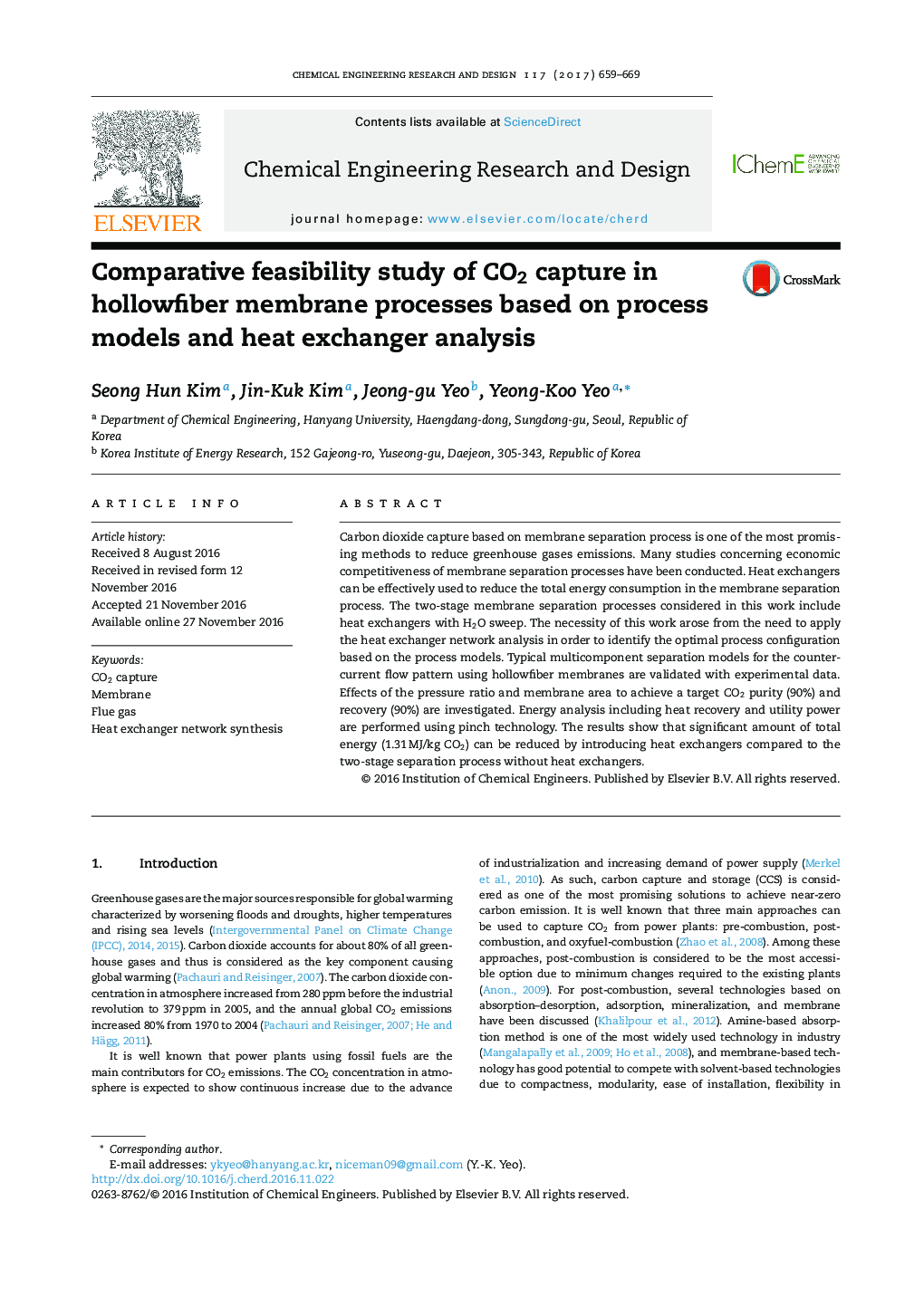| Article ID | Journal | Published Year | Pages | File Type |
|---|---|---|---|---|
| 4987405 | Chemical Engineering Research and Design | 2017 | 11 Pages |
â¢Operating conditions and membrane permeances to achieve a target are investigated.â¢Heat exchangers are introduced by applying heat exchanger network synthesis.â¢Heat recovery and utility power according to introducing heat exchangers are analyzed.â¢Total Energy can be reduced by introducing heat exchangers.
Carbon dioxide capture based on membrane separation process is one of the most promising methods to reduce greenhouse gases emissions. Many studies concerning economic competitiveness of membrane separation processes have been conducted. Heat exchangers can be effectively used to reduce the total energy consumption in the membrane separation process. The two-stage membrane separation processes considered in this work include heat exchangers with H2O sweep. The necessity of this work arose from the need to apply the heat exchanger network analysis in order to identify the optimal process configuration based on the process models. Typical multicomponent separation models for the counter-current flow pattern using hollowfiber membranes are validated with experimental data. Effects of the pressure ratio and membrane area to achieve a target CO2 purity (90%) and recovery (90%) are investigated. Energy analysis including heat recovery and utility power are performed using pinch technology. The results show that significant amount of total energy (1.31Â MJ/kg CO2) can be reduced by introducing heat exchangers compared to the two-stage separation process without heat exchangers.
